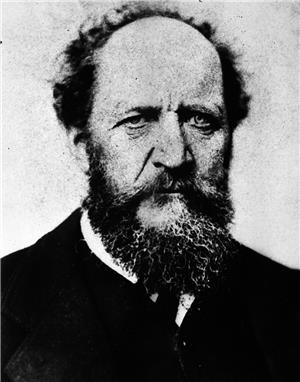On July 11, 1870, Henry A. Atkins, a pile driver who helped build docks and wharves up and down Puget Sound, is elected mayor of the City of Seattle, the first person to hold that office.
Business Interests
Atkins, a Republican, had been appointed acting mayor by the Washington Territorial Legislature on December 2, 1869, after the legislature reincorporated the City of Seattle. (Seattle was incorporated as a town for the first time in 1865, but the legislature rescinded that action two years later in response to a petition from citizens who were unhappy with the existing municipal government.) In reestablishing Seattle as a municipality, the legislature issued a charter that put the city's government in the hands of a mayor and a seven-member town council, with both mayor and council members to be elected annually on the second Monday in July.
It is not clear when Atkins first arrived in Seattle, but he was listed as one of 90 bachelors living in the town in the fall of 1860, out of a total white population of 182. At that time, he and two partners owned and operated a steam-driven pile driver (a machine used to drive piles into the ground to support wharves and other structures). Atkins moved the machine frequently, to wherever work was offered in the Puget Sound area.
Like many other early citizens, Atkins was involved in a variety of endeavors. In 1861, he helped clear land for construction of the first building for what became the University of Washington, on the site of what is now the Olympic Hotel in downtown Seattle. By December 1866, he had gone into the mercantile business. He and a partner, William H. Shoudy, bought a general store that had been established by Dexter Horton (1825-1904) at 1st Avenue and Washington Street. In announcing the purchase, the Puget Sound Weekly described Atkins and Shoudy as "worthy gentlemen, well qualified for the business." Coincidentally, both men went on to serve terms as mayor of Seattle (Shoudy in 1886).
Atkins also was a partner in the Seattle Gas Company, founded to provide coal gas lighting in Seattle; and the Puget Sound Wagon Road Company, an effort to build a toll road from Seattle to White Bluff on the Columbia River. Both ventures were launched in 1869; neither succeeded. By June 1875, Atkins had returned to pile driving. He was hired to build an addition to the Mill Company's wharf in Tacoma. Returning to Seattle by way of the Black River, with his pile driver, he built two wharves on Lake Washington for the Seattle Coal and Transportation Company. He then constructed a new wharf for that company on the Seattle harbor, with coal bunkers capable of holding 8,000 tons each.
Although he continued to be involved in civic affairs, serving as a juror in several notable trials, Atkins held no other municipal offices after completing his term as mayor in July 1871.

